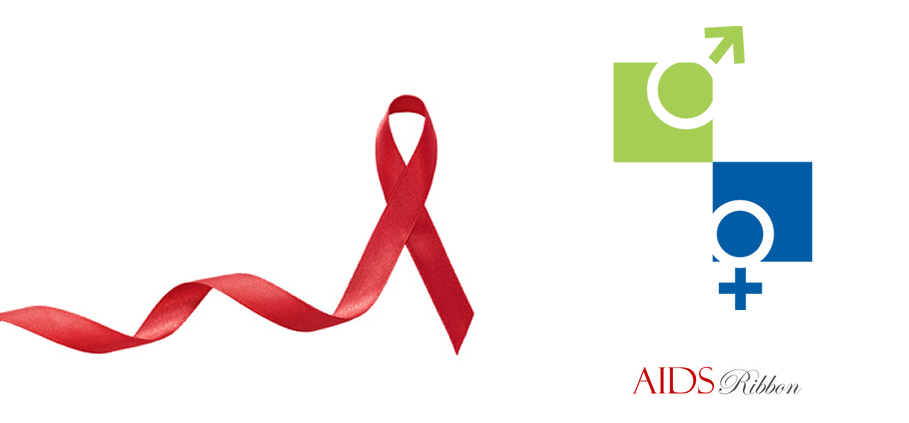Latest News
Women | Sexual Intercourse – Sexual Dysfunctions - Anorgasmy
Anastasios D. Kalantzis, Surgeon Urologist-Andrologist
It is a proven fact that women are cerebral, all actions initiate from and end up in their brain.
Modern woman wants, desires, claims. She claims her position in society, for equal treatment and civil rights, her professional acknowledgement and recognition. She also demands respect as well as satisfaction of her sexuality.
Going back in history, we can see that the role of women was in constant change and this was initially due to the technological development. It has been noted that, after the Neolithic era, society became patriarchic, contrary to the Paleolithic period when matriarchy prevailed. Later on, with the development of various civilizations and religions and with the moral principles, values and boundaries set – or not – by the male-dominated societies and their governors, a certain lifestyle was imposed, guarding, in this way, the indisputable dominance of men, their uncontrollable freedom and the financial profit their social position offered them.
In ancient Athens, woman’s position was degraded. She was confined in the house, with sole occupation Στην αρχαία Αθήνα η θέση της γυναίκας ήταν πολύ υποβιβασμένη, κλεισμένη στο σπίτι με μόνη της ενασχόληση τις οικιακές εργασίες. In ancient Rome, woman’s position and the family values underwent continuous change, from the reign of Emperor Augustus, when laws promoting family values were passed and established, and all the way to the eras of Caligula and Nero, when a brothel was created inside the palace, “staffed” with the wives, daughters and sons of prevalent citizens and men of the upper class, as well as the organization of orgies for the nobility. Later, the attitude of the Christian world in the medieval era and the renaissance towards women is ambiguous and vague. Both positive and negative characteristics are attributed to women who are referred to as either imperfect, evil and malevolent, or kind, gentle and humble.
Botticelli praises the woman in his “Spring”, while, on the other hand, Giordano Bruno refers to her as «this extreme wound and distortion of nature who, with her physical appearance, with a shadow, a ghost, a spell of Circes, sets herself in the service of reproduction, deceives us as a kind of beauty ».
The industrial revolution and the feminist movement in the 1970s contributed in the woman’s getting out of the house and the family and her entering the world of production. Today’s woman plays many interchangeable roles everyday. She is a working person, a daughter, a mother, a wife, a housewife, a lover. In her effort to deal with all her tasks and obligations on a daily basis, she faces obstacles and difficulties and is called to find solutions to the problems and conflicts she encounters and cope with attitudes and remains of old standards and stereotypes still existing in many societies even today.
Female sexuality, which was until recently neglected by the scientific community, is today a significant field of research. The sexuality of women is much more complex than that of men. A significant role in the creation of sexual problems in women during their sexual life is the attitude and behavior of her sexual partner.
The Female Sexual Dysfunction is categorized in two major disorder groups.
Desire Disorders
Excitement Disorders
Orgasm Disorders
Sexual Pain Disorders
Sexual desire is the initiation of the sexual cycle and intercourse. The sexual desire disorders in a person depend on many factors, such as long-lasting abstinence, interpersonal differences with the sexual partner, fatigue, stress, chronic anxiety, Religious and Social taboos, lack of education around sex. The causes may be physical (vascular, neurogenic, hormonal, chronic diseases, use of pharmaceutical substances, underlying malignant diseases of the lower urogenital system), psychogenic (depression, performance anxiety) or aging. Sexual Excitement Disorders are divided in to basic categories: a) Decreased Libido, by which we refer to difficulty in, or absence of, sexual fantasies and desire for sexual activity possibly resulted from fatigue, stress, the many and multiple obligations which she must deal with in everyday basis, or the conflicts and problems with her sexual partner, and b) Sexual Aversion, by which we refer to aversion to or avoidance of contact with the genitalia and any sexual contact, either with a partner or via self-satisfaction and is observed with women with traumatic, stress-inducing experiences, such as rape, cancer, physical disability or poor relationship with her sexual partner.
Analyzing the female sexual excitement and arousal we refer to the vaginal lubrication (wetness), internal enlargement and expansion of the vaginal area, the hyperemic tumescence of the clitoris, the increase of breast volume and hardening of the nipples. Other, accompanying phenomena include an increase in heart rate and breathing rate. In case of lack of these physiological responses or inability to maintain them during the process of intercourse until its completion, then we talk about Excitement (Arousal) Dysfunction. The causes of this condition may be physical or related with the use of medication and toxic substances, but in most cases it is due to psychological factors, such as performance anxiety, increased expectation of the sexual partner, his attitude etc.
The orgasm is the main chapter of the female sexuality and constitutes a complicated and multifactorial data system. According to research conducted with women of the western world, 15% of them have never had an orgasm, while 50% of those who have, report that they are not satisfied with the quality and frequency of their orgasms. Similar facts provided by Mayo Clinic show that 1 in 5 women present orgasm problems and, according to the American Psychiatric Association, the total percentage of women with orgasm dysfunction – regardless of their social background, personality, cultural and mental or intellectual status – is 30% worldwide.
With the general term Orgasm Disorder – Anorgasmia we refer to the repeated delay or absence of orgasm after a normal sexual excitement. The causes may be physical, psychogenic or advanced age and cause difficulty in interpersonal relationships and intense subjective embarrassment.
In our effort to approach this major issue in its essence, we will try to analyze it in depth, in order to give answers in questions raised, and separate “myth” from “reality”.
Age plays a significant role in woman’s orgasm. With the lapse of time, the woman gains greater sexual experience, learns more about her sexuality, acquires greater self-confidence and, in this way, she can have better sexual arousal and experience better orgasms. Also very crucial is the way she perceives herself, her self-esteem and the acceptance of her image and her body, as well as the continuous approval she receives from her sexual partner.
During sexual intercourse, women are trapped in their effort to reach an orgasm. Their entire sexual behavior focuses on this goal, and because of this they fail to experience any satisfaction from the sexual process of the intercourse itself (physical, emotional or mental).
Studies conducted by William Masters and Virginia Johnson showed that female orgasm is emotional-depended. Although women can have multiple orgasms, they are often satisfied with one orgasm and does not desire immediate repetition, although she continues to participate with sexual arousal and has the possibility of a new orgasm, if her partner continues to provide sexual stimuli.
As a mechanism, the female orgasm is not fully known. It seems, however, to initiate from the orgasmic plateau, which is the continuation of the female sexual arousal, in order to achieve, through the nerves and vessels which regulate vascular dilation and the hyperemia of the genitalia in cooperation with the cerebral centers that regulate this function, the completion of vaginal lubrication, the engorgement of the genitalia and mainly the vulva and labia, thus creating, through the parasympathetic system, the physiological responses that the woman experiences at the time of the orgasmic climax, which can last approximately 6-8 seconds: increased, even doubled heart rate, full engorgement of the labia majora and minora, increase of the muscular tone of the perineum and the rectum, uterine contractions and change in the vaginal color to vivid red or purple.
The orgasm disorder seems to be related to the clitoral or vaginal sense of climax, which, in some cases have great differences and characterize the absence of both vaginal and clitoral (stimulation of the clitoris by hand) orgasm during intercourse. Some women can experience orgasm with clitoris stimulation outside sexual intercourse, but can not reach a climax if there is no simultaneous clitoris massaging with their hand or the hand of their partner.
Although there is a cure to orgasm disorder, only a small percentage of women reveal their problem and most of them resort to pretense, since there is no visual way for their partner to perceive the absence of female orgasm. This is due to the fact that women regard lack of orgasm as a “weakness”, and also fear that they will cause embarrassment to their partner, making him feel “insufficient”.
The fourth major group of Female Sexual Dysfunction is the category regarding Sexual Pain Disorders experienced by women during foreplay or intercourse. Sexual Pain in women is categorized into a) Vaginismus, the continuous or intense, unconscious spasm of the external vaginal walls (the pubococcygeus muscle) which impedes with intercourse and is essentially due to psychological issues, such as feeling of guilt, moral and social opinions and taboos, as well as religious beliefs, and b) Dyspareunia, where again there is continuous or intense pain in the genital organs but this time during sexual intercourse. The causes may be physical (vascular, neurogenic, hormonal, chronic diseases, use of medical substances, infections, undercurrent malignant conditions of the lower urogenital system), psychogenic (depression, performance anxiety) or advanced age. In either case of sexual pain disorder, the sexual partner’s attitude and stance is decisive for the reduction or increase of the symptoms as well as for the treatment and cure of the problem.
Furthermore, another major health and a taboo problem is the Loose Vaginal Tissue. It concerns women of all ages and directly affects their psychological state and their sexuality. Some of the causes are pregnancy, childbirth, menopause, obesity, smoking, constipation, chronic cough and prior surgical operations (hysterectomy). It occurs when one of the organs of the female pelvis (uterus, urinary bladder etc.) projects or prolapses from the vagina opening. Some women don’t have symptoms, some others feel a “stoppage” sensation in the genital organs area, or a feeling that something prolapses in their vagina. Other symptoms are urinal or excremental incontinence, difficulty in urination, interrupted urine flow, constipation, pain – pressure – irritation in the vagina, vaginal hemorrhage, pain during sexual intercourse, and a tension sensation in the genital area. The surgical treatment of the problem is fast, and the results are spectacular and obvious from the very first moment.
Sexual Health is equally important to both sexes, regardless of age. Stress, fear and taboos distort desire and suppress arousal. A woman has sufficient desire and arousal and can reach an orgasm when she feels emotionally complete, safe and secure and, at the same time receives and enjoys the respect, interest and sexual desire of her partner.
Documentation
1. “Sexual Disorders and Sexual Identity Disorders”, www.psychologia.gr
2. Irene Tzelepi, Consultant Psychologist – Psychotherapist – “Sexual Desire”, www.psychologynet.gr
3. E.M.A.S (The Society for the Study of Human Sexuality) – “Female Sexual Health”, www.emas.gr
4. Thanos Askitis, Neurologist-Psychiatrist – “Hypotonic Sexual Desire”, www.askitis.gr
5. Thanos Askitis, Neurologist-Psychiatrist – “Sexual Arousal Disorders”, www.askitis.gr
6. Thanos Askitis, Neurologist-Psychiatrist – “Sexual Aversion”, www.askitis.gr
7. Thanos Askitis, Neurologist-Psychiatrist – “Inhibited Orgasm Disorder”, www.askitis.gr
8. Thanos Askitis, Neurologist-Psychiatrist – “Pain Disorders”, www.askitis.gr
9. E. Eleftheriou, Psychotherapist – Clinical Sexual Disorders Therapist – “Orgasmic Disorder”, 14/05/2011, www.zougla.gr
10. Hellenic Sexology Institute – “Female Orgasm”
11. Margarita Fylaktou, www.vrahokipos.net




